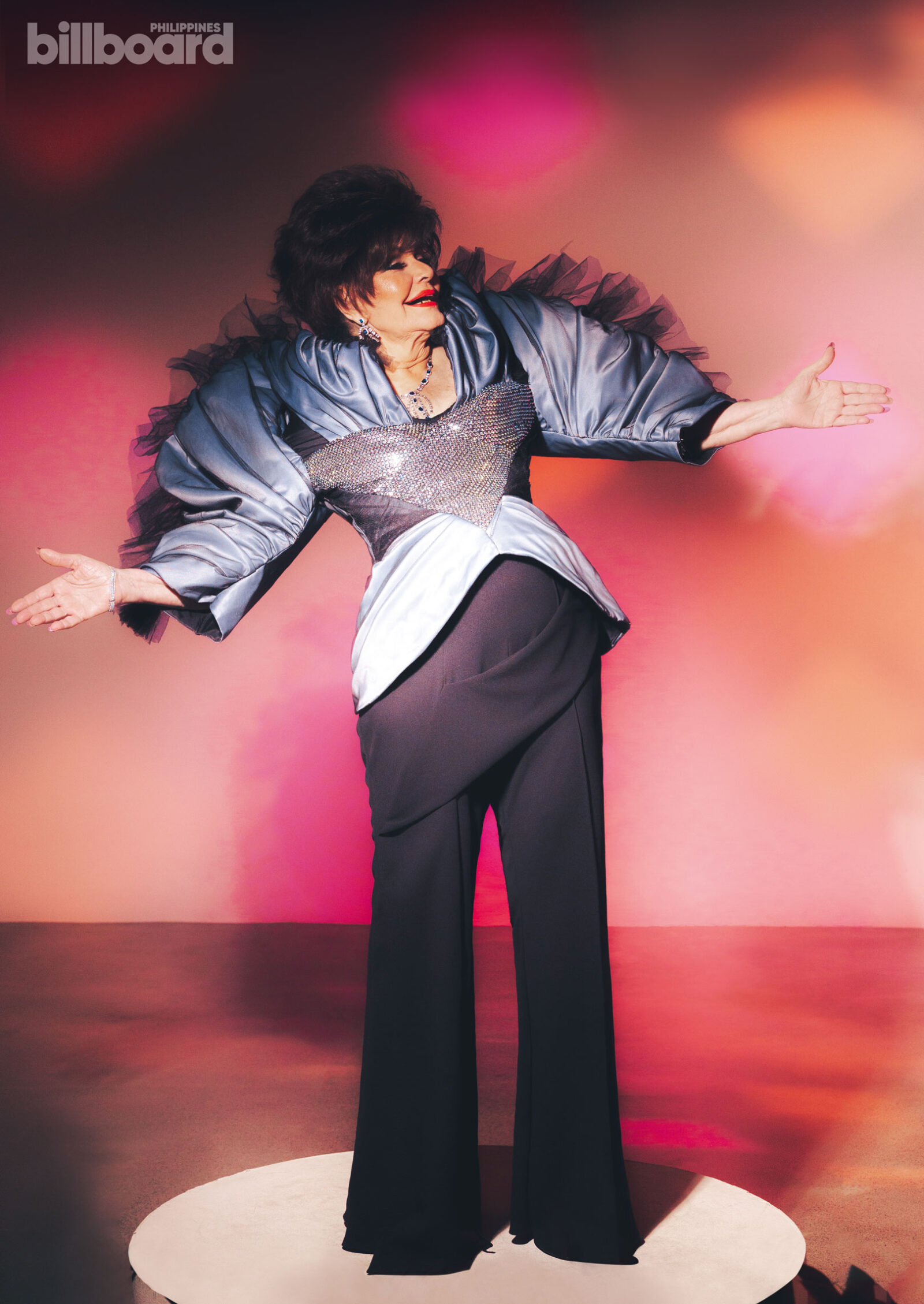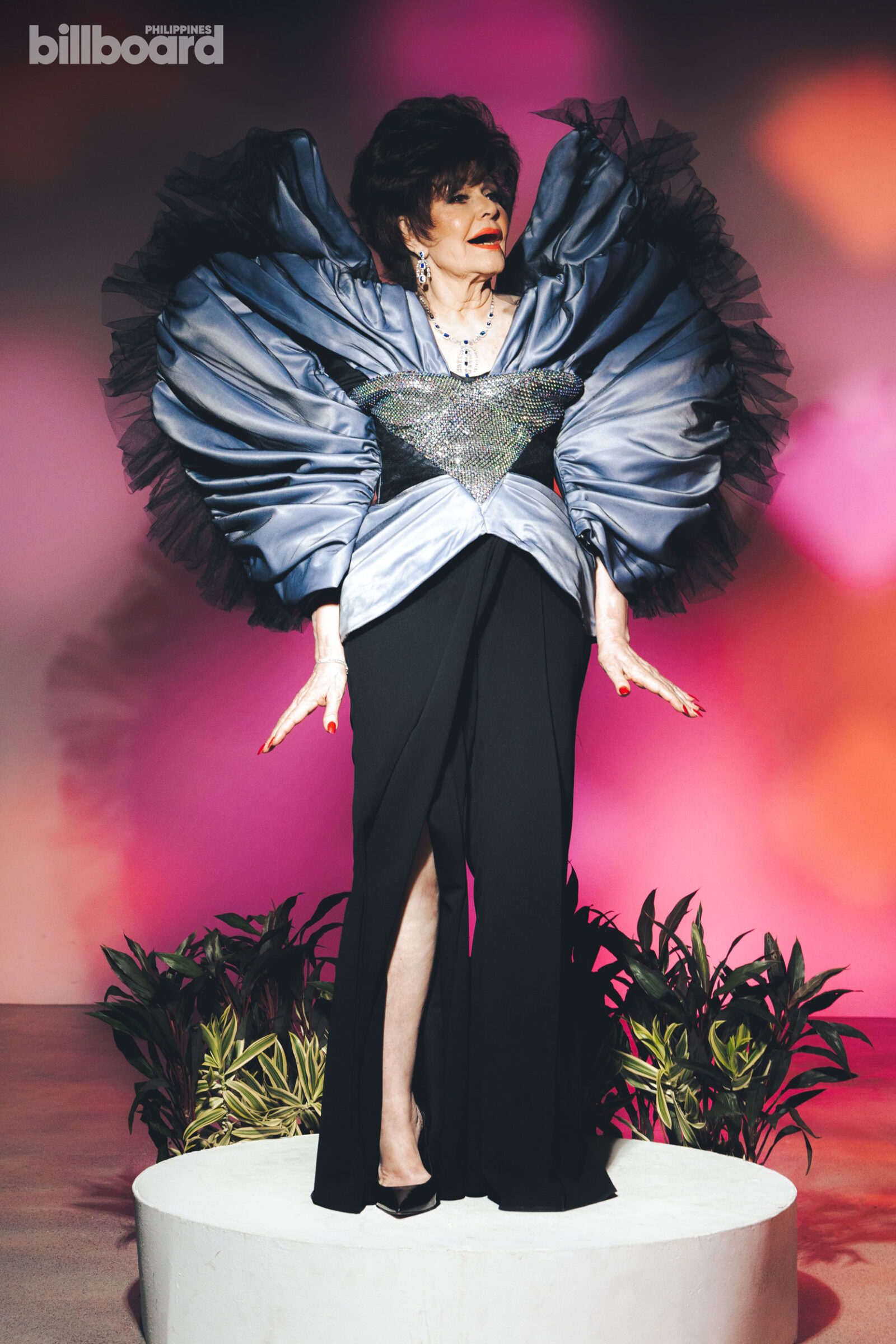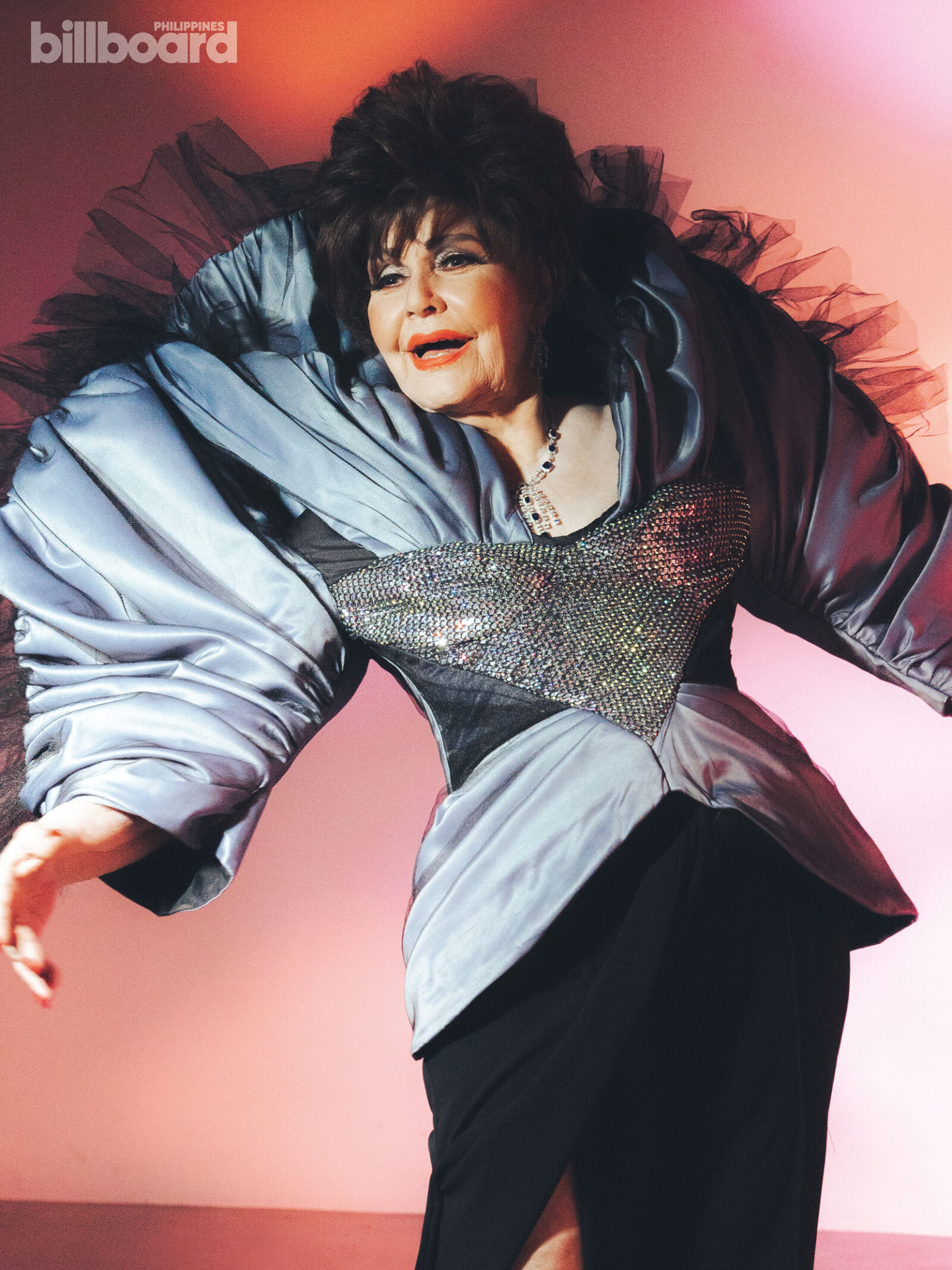Here’s Why The Backbending Pilita Corrales Is Our Music Industry’s Biggest Flex
Pilita Corrales literally and figuratively bends over backward for the Philippine music industry.

Pilita Corrales photographed by Borgy Angeles on August 2023 at the studio of Billboard Philippines in Pasig City, Philippines. Styled by Gee Jocson.
Pilita Corrales is best known as Asia’s Queen of Songs with the signature “liyad” (backbending) pose that lets her sing high notes even six decades into her career.
Beyond her vocal proficiency, Pilita is truly one of a kind. She achieved everything she did for Filipino music because of the curious life that she leads.
Learn more about her illustrious career, which is just as colorful as her personal history.
The Origin
Pilita’s career actually started down under.
En route to Australia as a young adult, the yacht she was on got shipwrecked by a typhoon that left her group stranded for over a week. She was eventually found by the Australian navy, and later “discovered” by the population.
The singer shot to fame in Melbourne, starting her recording career in 1959 with the locally produced hit single “Come Closer To Me” and becoming one of the first women to top the Australian pop charts.

Jan Garcia custom, Miladay Jewels diamonds.
The Representation
Even by today’s standards, Pilita is a superstar and was among the first in the Philippines.
She made her international breakthrough before her local one, getting Filipino culture — music, fashion, beauty — known to the world before she could make a name for herself here.
Her beauty was unfamiliar, as were her native clothes regularly made by her mother, which drew audiences waiting to see what she would wear next.
The Duality
Pilita is multilingual – she could sing in Filipino, English, Spanish, and Cebuano. This expanded her audience, allowing her music to reach the masses locally and the “high rollers” abroad.
She became instrumental in developing Original Pilipino Music (OPM) as one of the genre’s pioneers. In fact, Vic del Rosario partnered with her under Vicor Music to popularize Filipino-language recordings at a time when locals didn’t want to hear our own songs.
But even those more accustomed to foreign adaptations couldn’t resist the pull of “Philippine Love Songs Vol. 1,” which spawned enduring hits like “Kapantay Ay Langit” and “Dahil Sa Iyo.”

Jan Garcia custom, Miladay Jewels diamonds.
The Range
Pilita has collectively recorded over 135 albums and countless tracks including classics with multiple translations.
Her accolades include Cecil, Aliw, Tinig, and Awit Awards, and most notably a Lifetime Achievement Award from the Philippine Association of the Record Industry.
Caesars Palace, Carnegie Hall, and Kennedy Center have all hosted her performances. The Tokyo Music Festival even gave her the recognition of being the first Filipino winner of an international music festival.
The Influence
The country’s Queen of Soul, Jaya, said it was Pilita who gave her that big break to sing in the Philippines after seeing her perform overseas. Similarly, Gary Valenciano revealed that his first television guesting and performance was on her show: “One of the people who first saw me and who first believed in me was Tita Pilita.”

Jan Garcia custom, Miladay Jewels diamonds.
Megastar Sharon Cuneta and Asia’s Songbird Regine Velasquez likewise had a “full-circle” moment when they shared the stage with the Queen of Songs herself, Pilita, for their “Iconic” concert last year. Sharon fondly reminisced how it was Pilita’s songs that she grew up on, while Regine had her start through Ang Bagong Kampeon, a show Pilita co-hosted together with the late Bert Marcelo.
All these household names whom Pilita inspired can attest that life in the limelight is often a delicate balancing act. Pilita nonetheless always leans heavily into her core. That is, bending over backward to make things work for herself, for the Filipino music industry, and for all the people she believes in.
A version of this story appeared in Billboard Philippines’ pop issue, dated Oct. 15, 2023.
Art Direction by Kenneth Dimaano and Nicole Almero. Photographed by Borgy Angeles. Styled by Gee Jocson. Assisted by Ian Rey and Angelo Vasallo. Corrales: Hair and Makeup by Florencio Santos. Magdangal: Hair by Jay Wee. Makeup by Jonathan Velasco. Chan: Makeup by Jay Salcedo. Production Design by Migs Alcid, Assisted by Winona Te and Randy Lajara. Shoot Coordination by Mikaela Cruz. Photography Assisted by Pao Mendoza and Karl Mariano. Shoot Assisted by Megan Lim. Video Creative Direction by Kenneth Dimaano and Bret Jackson. Video by YouMeUsMNL. YouMeUsMNL Creative Heads headed by Kerbs Balagtas, Xavier Alfonso, Dale Reciña. DOP and Edited by Jireh Bacasno. Assistant Direction and Editing by Alanis Manantan. Video and Lighting Assisted by Sam Tangzo.